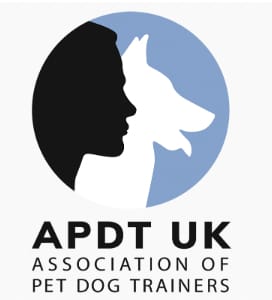How to Relieve Your Dog’s Separation Anxiety
15/03/2021 - Blog
Do you think your dog may have separation anxiety? Chantal Karyta, owner of CK9 Training, is a separation anxiety pro trainer. In this article she explains how to avoid and/or alleviate the trauma of separation anxiety.
Separation anxiety is nothing new. Dogs are social animals and some really can’t cope with being completely on their own. Anything can trigger the misery – and it is a misery for dogs and for pet parents. Moving house, changes in the family dynamic, a different daily routine, and lately, COVID has had a dramatic effect.
Pets have been in seventh heaven during lockdown – all of a sudden their beloved family are with them 24/7. But what will happen when the humans go back to work? And what about young puppies, bought during the pandemic, who have never ever been left on their own? How will they fair when lockdown is lifted?
How will you know your pet has separation anxiety?
Every single dog reacts differently to being left alone. Some will wreck the house and even hurt themselves trying to get out and follow you, others may annoy the neighbours by vocalising
Here are a few of the most commonly reported symptoms of separation anxiety.
- Following you everywhere while you are at home together
- Pacing and/or drooling as you prepare to go out
- Barking or howling
- Chewing or destroying possessions
- Toileting indoors
- Trying to escape
Most of the time, it’s pretty obvious that your dog isn’t coping home alone. You’ll come home to a mess or the neighbours let you know in no uncertain terms that Fido has been barking for hours – again!!! But sometimes the signs are more subtle – your dog starts panting and drooling when you start your “going out” routine, or you come home to the smell of poo but no sign of an actual accident (another sign of SA is defecating and eating the evidence).
Using technology to detect separation anxiety
If you are worried about how your pet reacts to being left home alone, you could use modern technology to do a bit of detective work. It’s very easy to buy and set up video cameras for you home. Some of them will even connect to an app so that you can use your mobile phone to monitor your dog’s behaviour.
At the end of this blog, I’ll post a link to an article that reviews some of the most popular doggie watching cameras on the market today. Look for one that allows you to see, hear and talk to your pet. You can even buy cameras that allow you to dispense treats - but beware of inadvertently rewarding unwanted behaviours!
How can you help your pet?
The very first thing to do is visit your vet for a thorough health check. What you think is separation anxiety could be symptoms of a physical problem – incontinence for example. You could also discuss your dog’s diet – sometimes a nutrient imbalance affects behaviour.
Next, please talk to a dog behaviourist. Ideally, somebody like me who specialises in separation anxiety. There are a number of different techniques to help your dog settle when left alone but they need to be introduced and managed very carefully. It’s very easy to get the timing wrong and exacerbate the problem.
Home training to help prevent and relieve separation anxiety
Here are a few exercises you can do at home to either prevent a full-blown separation related disorder developing (eg for puppies and adolescents who have never been left alone), or relieve your pet’s anxiety.
Teach your dog to settle
One sign of separation anxiety is that your dog will follow you EVERYWHERE. When you get up to make a cup of tea – Fido comes too. If you go into another room – Fido is right behind you. The dog just doesn’t seem to be able to relax!
Start by deciding where you would like your dog to settle. I often suggest training your pet to settle on a special blanket – one you can take with you to friend’s houses or to a café when we’re allowed out again.
Use the “shaping” technique to teach your pup to go onto the settle mat. In other words start by rewarding him or her when they just put one paw on the mat – then when they stand on it, sit on it and lie on it. Gradually change the reward system so that treats only arrive when they lie on the mat. Then introduce the “settle” cue. As time goes by you can increase the duration between settling and receiving treats.
Out of sight “Stay”
The out of sight “stay” teaches your puppy or dog that it’s OK for you to leave a room – you WILL be coming back.
Start by training a “sit-stay” or a “down-stay” and gradually increase the distance between you and the duration of the stay. Once you are confident that your dog understands, sit them on one side of an open door, give the cue to stay and then nip behind the door for a second or two. Reward them when they stay still and wait for you to return. Again, build up the length of time you “disappear” for and then try closing the door between you.
This exercise takes patience and you should NEVER use it if you are actually going out – the out of sight stay is not to be used while you go out shopping!
Increase your dog’s activity levels
My final piece of advice for this blog is to relieve your dog’s anxiety by keeping his or her brain busy while you are together. Lots of sniffy walks, trick training, puzzle toys and the sort of enrichment activities that will help your dog to relax while he or she is not being entertained.
Join the canine enrichment group on Facebook for some great ideas. Stuart – please open in a new tag
Help with Separation Anxiety
If you are concerned that your pet suffers from Separation Anxiety or worried that your lockdown puppy may struggle when you go back to work, please don’t hesitate to get in touch with me, Chantal Karyta.
Click here to navigate to my website and book a free discovery call Stuart – please open in a new tag
I also have a Facebook group specifically for helping dogs with separation anxiety. I regularly post lots of info and go on every week to do a FB live about one aspect of SA.
Click here to join my separation anxiety Facebook group.
Other useful articles
Great enrichment activities for dogs during lockdown
Introducing your dog to scentwork (trust me, you’ll both love it!)








